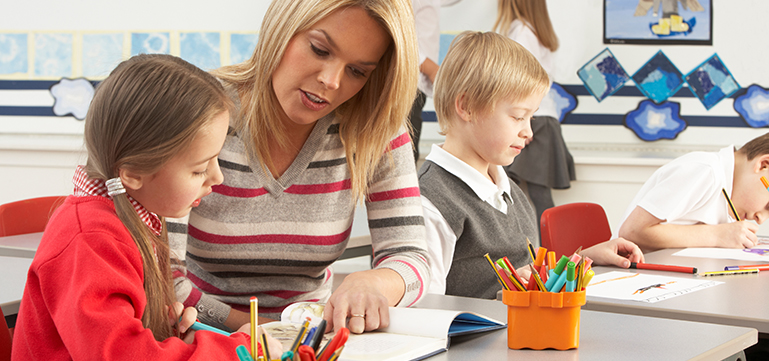Creativity in the recording of pupil assessment

Quick links:
Context
Radnor Valley C.P. School is located in a rural area of New Radnor in the County of Powys. There are currently 70 pupils on roll. Nearly all pupils are of white ethnic background and very few come from ethnic minority or mixed backgrounds. No pupils speak Welsh as a first language. A very few of pupils are eligible for free school meals.
The school has identified a few pupils as having additional learning needs, and a very few have a statement of additional learning needs.
Stage 1: Evaluating the current curriculum within wider self-evaluation arrangements
Following their inspection in June 2014, the school addressed the need to develop the following three key areas:
- continue to improve pupils’ Welsh language skills
- provide learning experiences that consistently meet the full range of ability in each class
- provide more opportunities for pupils in key stage 2 to take responsibility for their own learning in order to develop into independent learners
When Successful Futures, (Donaldson, 2015), was published, leaders at the school felt that they were well placed to consider the recommendations, especially as they felt that their post-inspection action plan was closely related to developing the report’s four purposes. However, it was not until summer 2016 that they realised that their current evaluation of teaching and learning was too superficial and overly generous. They agreed that, in order to provide regular opportunities for pupils to develop as independent reflective learners, they had to re-assess their current curriculum provision completely.
Their first action was to engage with stakeholders by asking parents, pupils and governors how they would feel about moving away from subject-based teaching. Questionnaires focused on gathering ideas about providing a skills-based curriculum that linked closely to themes that changed every half term.
Analysis of responses concluded that, if the school was going to address the recommendations of Successful Futures, (Donaldson, 2015), then leaders needed to evaluate the way teachers plan activities. Initially, staff were sceptical about the need to change. Although they had been accepted as a pioneer school for curriculum development, they were worried about not putting a ceiling on learning, which would mean a review of how teachers challenge pupils.
Through rigorous scrutiny of planning and regular lesson observations that looked closely at opportunities for pupils to develop as independent learners, the headteacher indicated a concern. She felt that lesson aims and objectives were often too generic and focused on what needed to be delivered in terms of curriculum content. Their review of planning concluded that, in order to develop a strong and innovative curriculum, teachers needed to be given the freedom to plan activities that would enable pupils to work independently and creatively. This was a brave decision and one that challenged most teachers who had only recently been judged by Estyn that their planning was ‘thorough’. The headteacher explained that, although the inspection report praised the staff for their collaborative approach to planning, they now needed to move the goalposts to deliver an enhanced curriculum that would meet the recommendations of Successful Futures, (Donaldson, 2015).
The headteacher’s main mechanism for collaborative reform was to encourage the teachers to be creative without the fear of being judged or criticised.
Stage 2: Planning and preparing for change
During this period of evaluating the curriculum, staff became increasingly worried about the need to assess pupils’ ability and attainment. They felt that the freedom to plan activities that focused on developing pupils’ skills would make it difficult for them to assess against national curriculum requirements.
School leaders reviewed the way they recorded pupil assessment and concluded that it would not be helpful to ask teachers to continue to evaluate achievement against a set of rigid level descriptors. They decided to continue with their skills‑based planning but to introduce opportunities for pupils to choose appropriate success criteria for every activity, ones that challenged them regularly and ensured that they constantly increased their knowledge and understanding. Leaders also developed a ‘Flight Plan’ approach to assessment. This involved evaluating where pupils are on their improvement journey. Teachers use a commercial, online assessment recording tool to record what skills pupils have experienced and the extent to which they have acquired and apply that skill. This provides the teacher with a level of achievement for the pupil that the teacher uses to plan the next steps in the pupil’s development. The teacher uses this level to inform the pupil’s ‘Flight Path’. For example, if Pupil A achieves a level 3, she may be traveling ‘on’, ‘above’ or ‘below’ her ‘flight path’. It is a simple but effective way of discussing achievement with the pupils and allows teachers to address attainment in relation to the achievement form baseline. This is in its formative stage and leaders are currently evaluating its impact on teachers’ planning against pupil outcomes at the end of key stage 2.